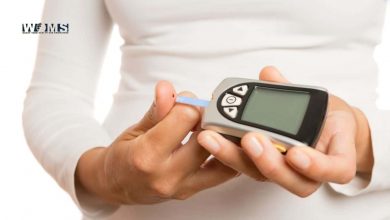Importance of EDD [Estimated date of delivery]

Pregnancy can be one of the most vital events in the life of a woman. While you get pregnant, It is just natural to want to know about your estimated delivery date. The estimated delivery (EDD) date can simply be referred to as the expected time of when you will be welcoming your tiny human in this world. The estimated delivery date can be calculated, and you can get to prepare yourself as per the same.
What is the calculation of the Estimated delivery date?
The estimated delivery date after pregnancy has traditionally been calculated by clinicians in terms of 10 lunar months or 9 calendar months and 7 days or 280 days or 40 weeks, calculated from the first day of the last menstrual period. This is called the menstrual or gestational age.
But the fertilization usually occurs 14 days prior o the expected missed period and in a previously normal cycle of 28 days duration, it is about 14 days after the first day of the period. Thus, the true gestational period is to be calculated by subtracting 14 days from 280 days i.e. 266 days. This is called fertilization or ovulatory age and is widely used by embryologist.
Based on these science and phenomenon of the human body certain ways can help to calculate the estimated delivery time of the baby which will enable the mother to be prepared as well.
How can you calculate your Estimated Delivery Date?
The estimated delivery date calculation has many methods. In today’s context, we can even use online strategies to calculate the estimated delivery dates. However, some of the common techniques used for the estimated delivery dates are:
Last Menstrual Period Calculation
This is one of the most common ways to calculate the estimated delivery date. You can use this technique at home by the following steps:
- Record the first day of your last menstrual period (LMP)
- Add up seven to this number
- Now count back three months from the month of your last period
- Depending on the result, you may have to add a whole year to the final date.
For example: If your LMP date was October 10, 2014, add 7 days to make the date October 17, 2014. Count back 3 months, and you get July 17, then add a year, and your estimated date of delivery becomes July 17, 2015.
Ultrasound EDD Calculation
An ultrasound is a medical intervention done to determine the estimated delivery date in some situations such as
- When you are unsure of your LMP
- When you have irregular periods
- When your uterus size does not match the size that is expected for your LMP
- When you register late for your prenatal care
The ultrasound helps by determining the age in weeks of the baby at the time of testing. With the help of sonography, the length of the embryoid measured giving the estimate of the gestational age. The most preferred time for using ultrasound for an estimated delivery date is between 7 and 10 weeks or between 12 and 18 weeks of pregnancy.
EDD Calculation Using Uterus Size
The uterus size also matters a lot in estimating your delivery date. The size of the uterus can be a sign to indicate the time and determine the estimated delivery date. As per the size of the uterus, we can roughly estimate the time of the delivery. It may, however, have an error of one or two weeks. And the size may vary as per the number of pregnancies. While it may be a bit smaller in the first pregnancy it may extend larger in the 2nd or 3rd pregnancy.
Calculating EDD From First Foetal Movements
The movement of the fetus can also matter a lot to help estimate the delivery date. You can start by counting the 18-20 weeks from the time you feel the first fetal movements. However, the movements may be noticeably light and fluttering which could go amiss as well. The movements usually occur at about 20-22 weeks for the first baby, 16-18 weeks for the other babies.
This is but a raw method and has low accuracy because it depends on your perception of your baby’s movement, which may be quite vague or unsure.
Other Approaches to Expected Delivery Date Calculation
Heart tones:
The doctor can give an EDD on basis of the baby’s heartbeat heard at the beginning at 9 to12 weeks and by using a stethoscope at 18 to 20 weeks.
Fundal height:
The doctor can use the measuring tape and evaluate the size of the belly in the 20th week to determine the EDD.
How can EDD be important to health?
The EDD can be important for the pregnant woman in many aspects of health. The pregnancy itself is concerned with the overall health conditions of the mother and child. Furthermore, the estimated delivery dates can have a direct link to the physical, mental, emotional aspects of the health of the mother. Some vital tips to maintain the health after knowing EDD are:
1. Physical Health:
The mother after knowing EDD would have to take additional care of herself physically to maintain a healthy pregnancy. Some tips for good physical health and are
- Light Exercises
- Eating Healthy
- Staying Hydrated
- Taking occasional walks
- Not pushing yourself for strenuous works
2. Mental Health:
Mental stability is also important to be maintained at this phase. EDD helps in the improvement of mental health and also helps to get ready for the delivery. Some tips you need to consider for mental health after knowing EDD are:
- Reduce stress
- Reduce worry
- Stay connected to loved ones
- Keep an emotional balance
- Do not overthink
Takeaway
Multiple benefits are given to the mother after knowing about the Estimated Delivery Dates. However, giving birth is a natural phenomenon that may be unpredictable. There may be situations of preterm birth as well as EDD overdue. However, one must not panic and should be prepared well for the entire time of the pregnancy, especially at the time of the EDD.




